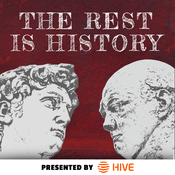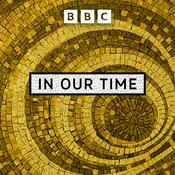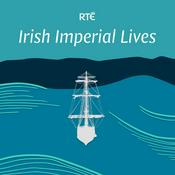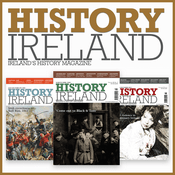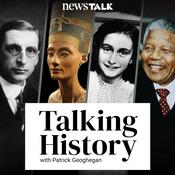251 episodes

A Royal Christmas with James I
22/12/2025 | 57 mins.
Merry Christmas! This holiday season, we’re taking a trip back to one of the most extravagant Christmas celebrations of Shakespeare’s lifetime—the Christmas of 1603, when the newly crowned James I hosted his first royal festivities as King of England. The court was alive with feasting, pageantry, and opulent merrymaking. It was a moment of political transition, and James made sure his first Christmas made a powerful impression. The newly renamed King’s Men, Shakespeare’s company, performed for the court, securing their new royal patronage. Alongside these performances were dazzling masques, intricate entertainments, and diplomatic displays designed to cement James’s image as both a unifier and a sovereign of grandeur. This week, our guide through the glittering halls of Whitehall Palace in the winter of 1603 is Martin Wiggins, Senior Research Fellow at the Shakespeare Institute, Stratford Upon Avon, author of British Drama 1533–1642: A Catalogue, and President of the Malone Society. Today, Martin joins us to share what made this holiday season so historically important, how theater helped James define his kingship, and what the royal court’s festivities can teach us about Shakespeare’s world. Stay with us—we’re about to unwrap a Christmas filled with drama, diplomacy, and theatrical delight. Hosted on Acast. See acast.com/privacy for more information.

Anne of Denmark: The Queen Who Transformed Shakespeare’s World
15/12/2025 | 28 mins.
Discover how Anne of Denmark shaped the culture of the Stuart court—from dazzling masques and groundbreaking stagecraft to political influence, artistic patronage, and a powerful performance legacy that helped define the world Shakespeare lived in. In this episode, Clare McManus joins us to explore how Anna’s identity, her innovations in court performance, and her role as a cultural force reveal a very different picture of queenship in early modern England. Hosted on Acast. See acast.com/privacy for more information.

"You dissentious rogues..." The Language of 16thC Thieves
08/12/2025 | 33 mins.
In Shakespeare’s play Henry IV, Part 1, Falstaff declares on more than one occasion, “I am a rogue.” Several exchanges between Falstaff, Henry V, and others like Hostess Quickly and Doll Tearsheet, see characters throwing the word “rogue” back and forth as both an insult and a badge of honor.The term connects to a real form of slang underworld language known as rogue cant. Which was a secret, cryptic lexicon, spoken and understood only by criminals. Falstaff and his companions are the closest depictions of criminals in Shakespeare’s works. Their roguish behavior includes gathering at the Boar’s Head in Eastcheap to plan their crimes and divide their spoils. By choosing to use the word “rogue,” Shakespeare was deliberately connecting his characters to the real criminal underworld of 16th-century England that trafficked in this mysterious and coded language.To introduce us to this rogue cant, and to help us unlock the hidden meanings of these words so that we can better understand the culture that produced them, we are excited to welcome Ari Friedlander back to the show.Ari joins us today to take a closer look at rogue cant: where the words came from, how they were used, and what they reveal about Shakespeare’s world. Hosted on Acast. See acast.com/privacy for more information.

Arthurian England: How the Tudors Used Myth to Build a Nation
01/12/2025 | 37 mins.
When we think of King Arthur, many of us imagine medieval romance—knights in shining armor, enchanted swords, or chivalric quests. But for the Tudors, Arthur wasn’t just storybook material. In the 16th century, Arthurian legend was a political tool, a national symbol, and—for some—an actual piece of English history. From Henry VII naming his heir “Prince Arthur,” to Elizabeth I being welcomed at Kenilworth with Lady-of-the-Lake imagery, the Tudors used Arthurian myth to define their dynasty, elevate their authority, and shape the emerging idea of English nationalism.This week, we’re exploring how Arthur, Merlin, and the world of Geoffrey of Monmouth were reinvented for a new age of politics, performance, and propaganda. Our guest, historian Andrew, walks us through royal pageants, literary allegory, and visual symbols that connected the Tudor monarchy to a heroic—and sometimes ominous—legendary past. Hosted on Acast. See acast.com/privacy for more information.

Gratitude, Diplomacy, and Deer at the First Thanksgiving
24/11/2025 | 27 mins.
In November 1621, two communities—Wampanoag and English—came together at the edge of Patuxet for a shared harvest meal. While today we call this moment “The First Thanksgiving,” the historical reality is far richer and more culturally complex than the simplified story many of us grew up hearing.In this week’s episode, we explore this early moment of connection with Malissa Costa (Mashpee Wampanoag) and Richard Pickering (Plimoth Patuxet Museums). Together, they guide us through the world of the Wampanoag in the early 17th century—what they wore, how they prepared deerskin through traditional brain-tanning methods, how diplomacy often involved gift-giving, including venison, and what agricultural knowledge they shared with the English that ultimately saved lives.Rather than a single act of generosity, the 1621 harvest feast emerges as a meeting point of two sophisticated cultures—each with its own traditions of giving thanks, diplomacy, and seasonal celebration. As we step into this history, we learn how deeply both communities valued gratitude, relationship, and the generosity of the land. Hosted on Acast. See acast.com/privacy for more information.
More History podcasts
Trending History podcasts
About That Shakespeare Life
Listen to That Shakespeare Life, Dan Snow's History Hit and many other podcasts from around the world with the radio.net app

Get the free radio.net app
- Stations and podcasts to bookmark
- Stream via Wi-Fi or Bluetooth
- Supports Carplay & Android Auto
- Many other app features
Get the free radio.net app
- Stations and podcasts to bookmark
- Stream via Wi-Fi or Bluetooth
- Supports Carplay & Android Auto
- Many other app features


That Shakespeare Life
download the app,
start listening.






